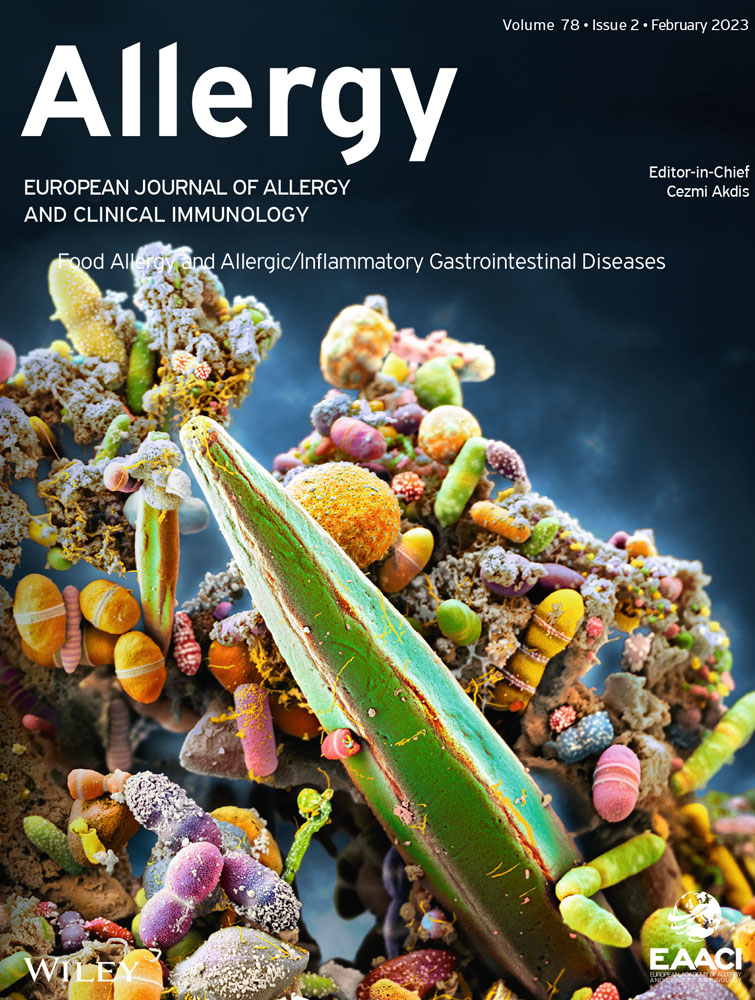Nutritional metabolites as biomarker for food intake to improve dietary-based randomized control trials
The burden of asthma and allergic diseases such as allergic rhinitis, eczema, and food allergies has increased worldwide. Currently, there are no cures for these diseases, and symptomatic therapies or those offering the possibility of increased tolerance are often administered for prolonged periods. Likely, the best long-term solution to stop the allergy and asthma epidemic is primary prevention.
Therefore, there is a need to identify modifiable factors associated with the development of the diseases. Dietary intake is a modifiable risk factor that could potentially lead to reduced asthma and allergy outcomes. In this journal, Venter and O'Mahony highlighted the role of immunomodulatory potential of nutrition on the microbiome, epigenome, immune system, and subsequent immune outcomes.1 The fetal immune system develops as early as 12 weeks’ gestation. The maternal diet during pregnancy has the potential to modulate asthma, allergic, and other disease outcomes in the infant. Currently, associations presented in systematic reviews are limited.2 The limitations regarding dietary interventions during pregnancy to prevent offspring asthma/wheeze are further highlighted by the Global Initiative for Asthma (GINA) guidelines.3 The only dietary recommendation by these guidelines indicates that correcting vitamin D deficiency in pregnant women may reduce offspring wheeze. Nevertheless, recent data of randomized controlled trials (RCT) indicated that fish-oil derived n-3 long-chain polyunsaturated fatty acid (n-3 LCPUFA) supplementation during pregnancy may reduce the risk of the development of asthma and lower respiratory tract infections in the offspring.4, 5 The ability to draw clear associations between maternal diet intake and offspring allergy outcomes may be limited due to a lack in validated diet collections tools, leading to a high risk of bias in dietary assessment.6 Therefore, there is a need for biomarkers that accurately assess dietary intake. Metabolomics may provide some options for measuring dietary intake.
One example of such a biomarker is measuring short-chain fatty acids (SCFAs) in fecal samples. Elevated SCFAs in 1-year-old children after consumption of milk products, fish, fruits, and vegetables were inversely associated with a reduced risk of allergy and atopy development later in life. It has also been shown that SCFAs have broad effects on the immune system.7, 8 Another example of a promising biomarker for milk product consumption early in life is N-glycolylneuraminic acid. An anti-N-glycolylneuraminic acid response in sera was induced after cow's milk consumption in early life that was inversely associated with the incidence of asthma and wheezing. Furthermore, N-glycolylneuraminic acid correlated with induction of immunological tolerance indicated by increased production of regulatory T cells.9
The study of Gürdeniz et al. aimed to identify metabolomic biomarkers in children which are associated with high n-3 LCPUFA consumption of pregnant mothers and with a reduction in the risk of asthma development and lower respiratory tract infections in the offspring.6 Gürdeniz et al. assessed the metabolic profile of newborn dried blood spots in the context of two cohorts: the Copenhagen Prospective Studies on Asthma in Childhood (COPSAC2010), a mother–child RCT to assess the effect of fish-oil supplementation during pregnancy on the development of persistent asthma and wheezing by 6 years and the COPSAC2000, a high-risk cohort including 411 children born to mothers with a history of asthma.6 Pregnant women received either 2.4 g of fish-oil derived n-3 LCPUFA capsules (55% EPA and 37% DHA) or a placebo. Wheezing and asthma were diagnosed by the COPSAC pediatricians based on a validated, symptom-based algorithm using daily diary recordings of troublesome lung symptoms, medication use since birth, and objective assessments at acute care and scheduled visits to the COPSAC research unit.6
Furan fatty acids originate from plants and algae and accumulate in fish and crustaceans. Humans do not produce furan fatty acids de novo but acquire it through nutritional intake. The metabolomic studies led to the discovery of a furan fatty acid metabolite, CMPF (3- carboxy-4-methyl-5-propyl-2-furan propanoic acid) as a strong biomarker of fatty fish intake. The group showed that increasing levels of CMPF in the newborn's blood were strongly associated with prenatal n-3 LCPUFA intake and associated with a reduced risk of developing asthma before age 6 years. These findings were replicated in the independent, observational COPSAC2000 cohort, suggesting that newborn CMPF level may be utilized as an asthma-relevant biomarker of prenatal n-3 LCPUFA exposure for risk stratification.6 Furthermore, in both cohorts, CMPF levels in newborn children were also inversely associated with number of episodes with troublesome lung symptoms and common infections in the first 3 years of life but not with lung function or any other allergy outcome, suggesting that CMPF depicts the very common nonatopic childhood asthma endotype characterized by early debut and high load of infections.6
The identification of biomarkers for dietary intake is crucial to perform nutrition-based RCTs and to understand the effect of nutrition on the development of a disease. Moreover, metabolic profiling has emerged as a powerful tool for biomarker discovery. Nevertheless, additional research is necessary to understand whether the newly discovered biomarkers have a further role in pathophysiology of the related disorders.
CONFLICT OF INTEREST
Dr. Venter reports grants from Reckitt Benckiser, grants from Food Allergy Research and Education, grants from National Peanut Board, during the conduct of the study; personal fees from Reckitt Benckiser, personal fees from Nestle Nutrition Institute, personal fees from Danone, personal fees from Abbott Nutrition, personal fees from Else Nutrition, and personal fees from Before Brands, outside the submitted work. Dr. Frei has no conflicts of interest.




